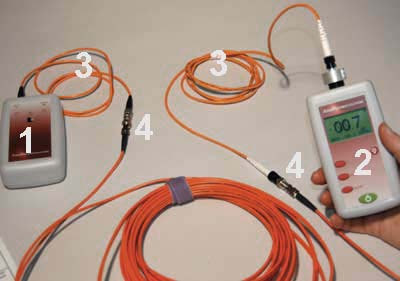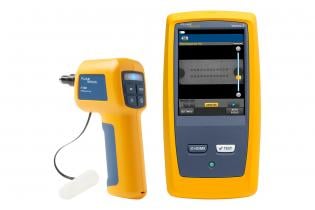The Function of Optical Fibre Testing in Ensuring High Quality and Effectiveness in Connectivity Solutions
In today's quickly progressing digital landscape, the importance of optical fibre testing can not be overemphasized, as it offers as a foundation for ensuring the quality and effectiveness of connection services. As innovation proceeds to breakthrough, the future of optical fibre testing presents interesting difficulties and opportunities that merit closer evaluation.
Importance of Optical Fiber Testing
The significance of optical fiber testing can not be overstated in making certain the integrity and performance of interaction networks. As the foundation of contemporary telecommunications, optical fibers promote high-speed data transmission, making their dependability important to functional success. Evaluating functions as a positive measure to determine potential issues such as signal loss, attenuation, and physical damage, which can compromise network performance.
Normal testing permits the confirmation of setup high quality and the detection of defects that can impact information honesty - optical fibre testing equipment. By using rigorous screening procedures, network drivers can reduce the threats associated with network failures, including downtime and monetary losses. Optical fiber screening ensures conformity with market criteria and laws, enhancing the general high quality of service given to end-users.
Inevitably, the systematic assessment of optical fibers adds to the longevity and effectiveness of interaction systems. It makes it possible for stakeholders to make informed decisions concerning upkeep, upgrades, and troubleshooting. In a landscape where data is progressively important, focusing on optical fiber screening is vital to maintaining robust and efficient connectivity remedies, thereby sustaining the needs of contemporary digital environments.
Kinds Of Optical Fibre Tests
Numerous screening methods are utilized to make sure the functionality and dependability of optical fibers within communication networks. These examinations can be generally categorized right into 2 major types: installment tests and upkeep examinations.
Installment examinations are conducted instantly after the installation of optical fiber cords to confirm their efficiency and honesty - optical fibre diameter analyser. One of the most typical installment tests consist of Optical Time-Domain Reflectometry (OTDR) examinations, which assess the high quality of the fibre by identifying mistakes or breaks, and end-to-end loss tests, which gauge the overall optical loss from one end of the fibre to the various other
Maintenance tests, on the various other hand, are executed periodically to make sure continuous efficiency and detect prospective problems gradually. These consist of visual evaluation, which look for physical problems or improper installations, and connection tests, which confirm that the signal can travel through the fiber without interruption.
Furthermore, progressed tests such as Polarization Mode Dispersion (PMD) and Chromatic Diffusion (CD) examinations can be carried out to review the fiber's efficiency under numerous conditions. By employing these diverse screening techniques, professionals can keep high requirements of quality and reliability in optical fiber networks.
Advantages of Routine Evaluating
Normal screening of optical fibres plays an essential duty in maintaining the total performance and integrity of interaction networks. By carrying out regular evaluations, companies can ensure that their fibre optic installations fulfill sector standards and run successfully. This aggressive approach assists to recognize potential weaknesses and degradation with time, permitting prompt treatments prior to problems escalate.

Cost-effectiveness is another benefit. By addressing small concerns early, organizations can avoid the high costs related to significant repair work or system failures. Normal testing likewise cultivates compliance with regulative requirements, guaranteeing that the network complies with essential security and efficiency requirements.
Typical Concerns Determined
Identifying typical problems in optical fiber networks is important for preserving optimum performance and reliability. Various aspects can add to disruptions, consisting of physical damages, poor setup practices, and ecological influences.
Physical damages, such as bends, breaks, or abrasions, can considerably deteriorate signal high quality. Incorrect installation techniques, including extreme tension or insufficient protecting of cable televisions, may cause enhanced attenuation and loss of connection. Additionally, ecological aspects such as temperature fluctuations, wetness ingress, and rodent interference can compromise the stability of the fibre.
Connector issues likewise regularly occur, with inappropriate positioning or contamination bring about raised insertion loss. Moreover, splicing errors can present considerable signal destruction if not implemented with precision.

Resolving these typical concerns via regular optical fibre testing not just improves network integrity but also optimizes overall performance, guaranteeing that connection remedies continue to be robust and efficient.
Future Patterns in Testing
As the need for high-speed connectivity continues to climb, the future of optical fiber testing will increasingly focus on automation and progressed analytics. The integration of expert system (AI) and artificial intelligence (ML) in screening processes will certainly enable much more effective information evaluation and anticipating maintenance, lowering downtime and enhancing general network dependability. Automated screening remedies will certainly enhance the evaluation and accreditation of fiber networks, lessening human error and boosting screening throughput.
An additional considerable trend is the adoption of remote testing modern technologies. As the implementation of fibre networks expands into remote and underserved areas, remote screening abilities will allow technicians to keep track of and identify network problems without physical visibility, therefore minimizing operational expenses and improving reaction times.
Furthermore, there will be a shift towards more extensive screening requirements that include not just traditional loss measurements but also efficiency metrics such as latency and transmission capacity utilization. This all natural strategy will facilitate far better network administration and optimization methods.
As these fads evolve, the optical fibre screening landscape will certainly not only boost the high quality and efficiency of connection remedies but also support the growing intricacies of modern communication networks.
Verdict
In final thought, optical fiber testing offers as an essential component in keeping the ofda honesty and effectiveness of interaction networks. The recurring dedication to normal screening not only enhances information transmission yet additionally aligns with sector criteria, promoting reliability in network frameworks.